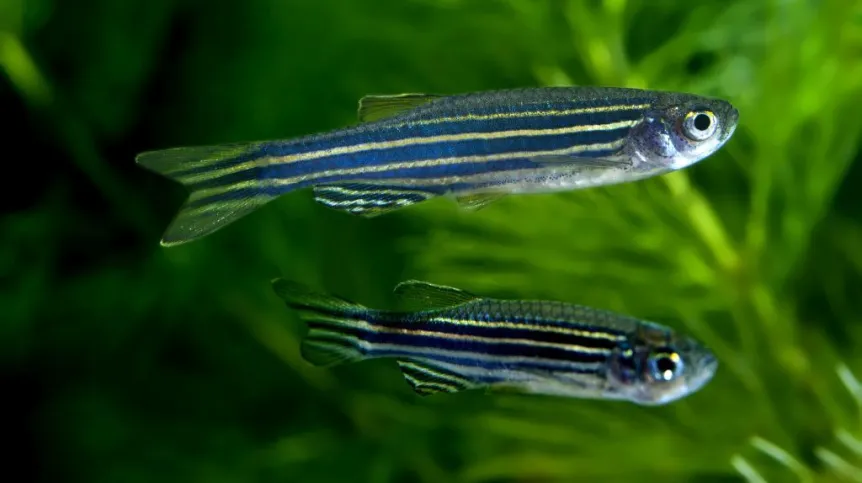
Unremarkable fish - zebrafish - can substitute rats, mice and flies in experiments. It helps scientists to understand, among others, mechanisms of human diseases - even mental diseases. A large culture of these fish for research purposes operates in Warsaw.
Zebrafish is a small fish. Next to fruit flies, mice and rats is a popular model organism used in scientific research. Several years ago, the International Institute of Molecular and Cell Biology in Warsaw established the Zebrafish Core Facility. 40 different zebrafish lines are currently kept in 470 tanks. Research on these animals allows to understand the mechanisms of various diseases and develop different kinds of therapies for the treatment of humans.
"We now know that approx. 70 percent of human genes have their counterparts in the fish genome. Genetically, we are very similar. If we consider adult fish, it is not that similar to an adult human, but if we look at a human embryo and a fish embryo, they are remarkably similar" - compared Solnica-Krezel.
Prof. Lilianna Solnica-Krezel from Washington University School of Medicine in the US noted that there are many advantages to using zebrafish instead of other experimental animals. Firstly, fish develop outside the mother\'s body, and the embryos are transparent. In addition, a female can produce up to 1,000 embryos per day.
Director of the International Institute of Molecular and Cell Biology Prof. Jacek Kuźnicki added that fish embryos allow to quickly run a large number of screening tests and determine which compound has potential as a drug. Another advantage of zebrafish research is that the administration of potentially therapeutic compounds is easier than their administration to mammals - drugs may be administered directly into the water.
Prof. Ewa Snaar-Jagalska from the Dutch Leiden University conducts research on zebrafish. "With the help of genetics, we can make embryos, which, for example, have lines that glow green in specific lighting. There are also lines of fish that, for example, have glowing immune cells" - she said. She added that human cancer cells can be implanted in fish, marked with a different colour and the development of cancer observed at the cellular level, or, for example, the interactions of these cells with immune cells and cells forming veins can be studied. According to the researcher, in some cases, vein growth is the first step in a very dangerous phase of the development of cancer.
In turn, the work of Prof. Kuźnicki concerns neurodegenerative diseases. His team members use zebrafish to study mechanisms of familial Parkinson\'s disease. Researchers already have plans to create models of mental diseases, including bipolar disorder.
According to Prof. Kuźnicki, scientists are able to obtain the expression of certain glowing proteins in certain cells of the brain. The researchers believe that these proteins will allow them to spy on certain mechanisms leading to bipolar disorder. Prof. Kuźnicki described that the fish with symptoms of bipolar disorder tend to have symptoms of euphoria, but also the symptoms of depression, which can be recognized when they are not active and or seek shelter.
PAP - Science and Scholarship in Poland, Ludwika Tomala
lt/ ksk/ mrt/
tr. RL













